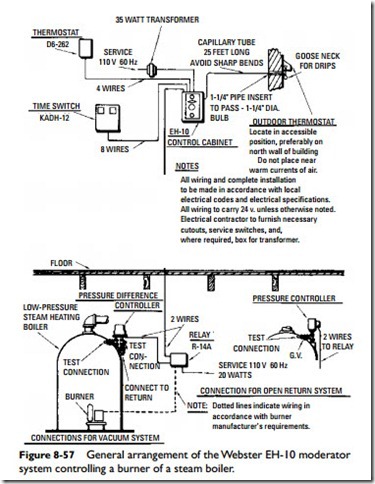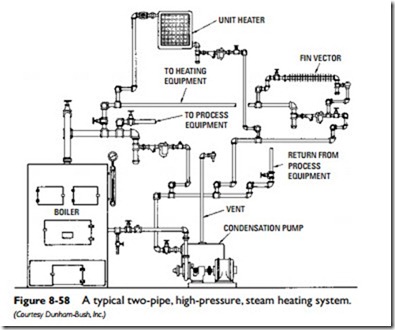High-Pressure Steam Heating Systems
High-pressure steam heating systems operate at pressures above 15 psig (generally in the 25- to 150-psig range) and are usually found in large industrial buildings in which space heating or steam process
equipment (e.g., water heaters and dryers) is used. An example of a typical two-pipe, high-pressure steam heating system is shown in Figure 8-58. This system is also referred to as a medium-pressure steam heating system when the steam pressures are in the lower ranges.
One advantage of this system is that the high pressure of the steam permits the use of smaller pipe sizes. The high steam pressure also makes possible the elevation of the condensate return lines above the heating units, because the return water can be lifted into the return mains. High-pressure condensate pumps and thermo- static traps are commonly used in these systems to handle the condensate and return it to the boiler.
High-pressure steam heating systems are more expensive to operate and maintain than low-pressure systems. In most cases, a licensed stationary engineer must be hired for the installation—a factor that tends to increase the operating cost.

